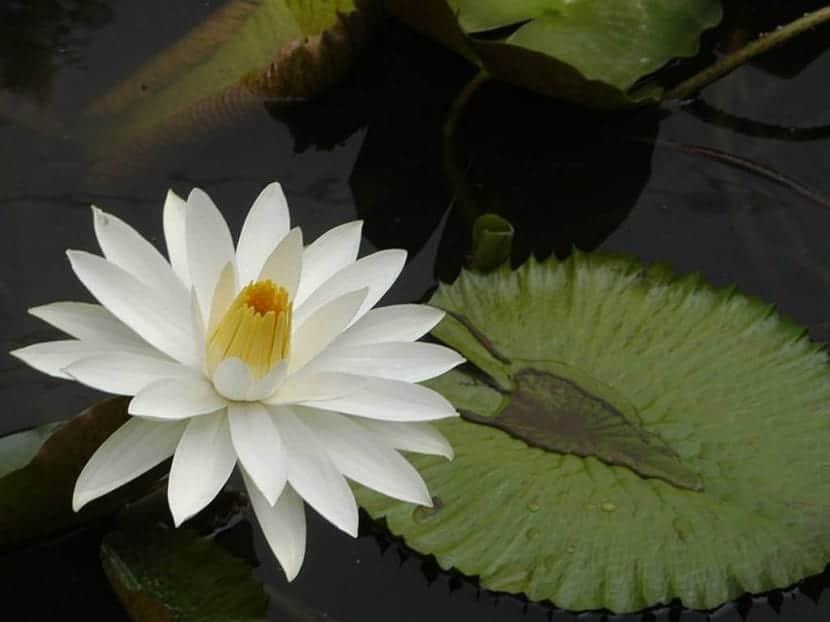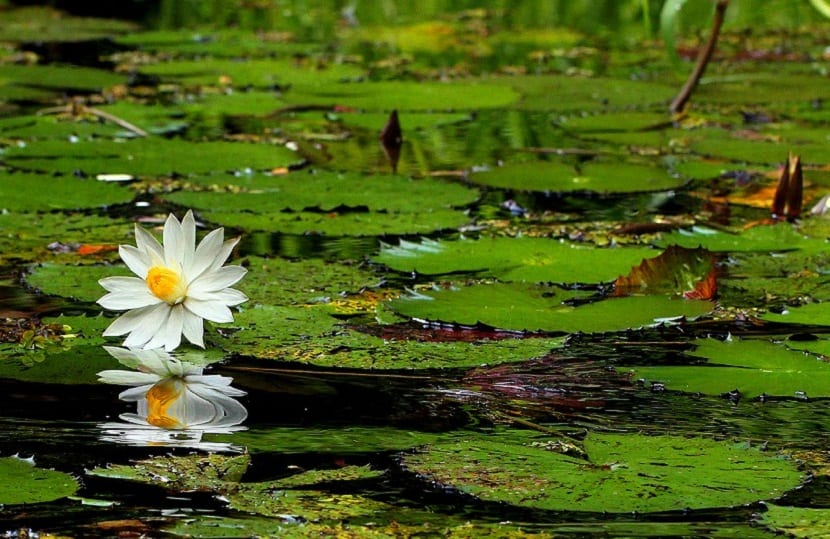
La nymphaea lotus is an aquatic plant belonging to the family nymphaeaceae, also known as tiger lotus. This species is ideal for open-air ponds, where you can enjoy its real morphology and its extraordinary flowering. But it can also be grown in aquariums. Its cultivation is relatively easy and its peculiar characteristic is the tone of its leaves, which can vary from an orange-red to an intense red.
Origin of Nymphaea lotus

This plant found in the wild practically throughout central and southern Africa, where it can be seen from Cameroon to the island of Madagascar, also northeast of the African continent until reaching Egypt. Its presence has spread further, so today it can be seen as an exotic species in tropical regions of Southeast Asia and even south of the United States of America.
Features
La Nymphaea lotus It is a macrophyte with large flowers that stand on water, it has foliage that, submerged, tends to be intense red, almost purple, and a whitish inflorescence. This species thrives in warm and clean stagnant water settings, difficult to see in running water and can reach 40 to 80 centimeters in height. Something characteristic of this plant is that it blooms at night and closes its flowers in the morning.
In its wild context, this aquatic species displays much of its extraordinary floating foliage, but as with most plants of its species, its stoloniferous rhizome rests on the bottom clinging through its root system. The size of the pedicels that link the rhizome to the leaves varies according to the amount of water. Alternate periods of intense flowering with others of rest.
Growth
The growth of this plant depends on the conditions in which it is found. The same develops immersed foliage that initially remains quite low and thick, then a group of leaves are formed for the surface. These leaves have a different shape that is placed vertically and then fold into themselves until they submerge and then emerge, thanks to the extensive pedicels until they reach the surface again, where their appearance changes once more when opening and unfolding.
If you prefer to keep the plant low and compact to avoid the spread of superficial leaves, when you consider it necessary you can proceed to eliminate the largest or oldest leaves, pruning from the base of the petiole and then cutting the stems of the predestined leaves to the surface. In a context of low light, this plant tends to become less compact and an early proliferation of leaves destined for the surface is generated, this because the little light in the background forces the plant to go in search of the light of the surface.
In a wild space the darkness of the bottom caused by the excessive reproduction of superficial leaves, makes nymphaea lotus stop developing sheets intended for dipping and produce only groups of sheets for the surface. What turns the plant into a kind of float, supported by the rhizome.
Propagation
The seed must be wet before cultivation, so proceed to sow the seeds in containers that contain about 25 mm of water at a temperature of approximately 25º C. Once you make sure that the first superficial leaves have appeared, Increase the water level progressively as the plant grows.
Fertilization

If it is a medium-sized plant, the applying a fertilizer helps it develop a better quality foliage, both in terms of durability and shades, of course, this will depend on the light of the place and the administration of CO2.
Uses
In addition to being widely used as an ornamental plant to decorate large aquariums, some parts of the nymphaea lotus they are commonly ingested as food and are also used in traditional medicine for the treatment of various diseases.